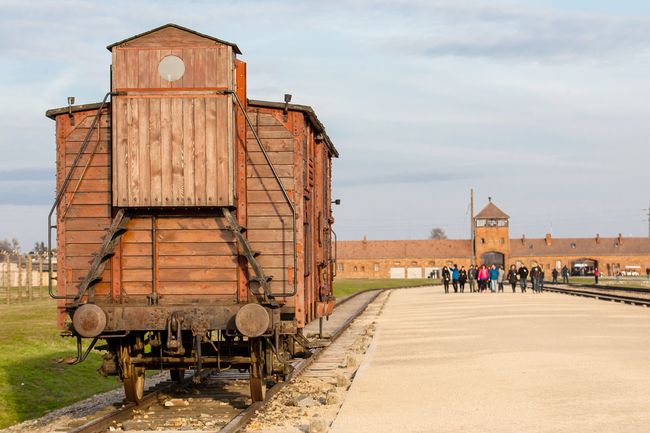Near the ancient Polish city of Krakow, there is a small town of Oswiecim. Here, during the Second World War, the Nazis established the largest camp complex, which the entire world knows as Auschwitz, using its German name. It consisted of a concentration camp, a death camp, and a forced labor camp. It was this concentration camp that became the deadliest place of extermination of innocent people in the history of humankind. The prisoners were killed in the crematoria, they died because of intolerable working conditions, hunger, cold, epidemics, cruel punishments, and medical experiments. The exact number of the Auschwitz-Birkenau death camp’s victims is unknown even now. The rough estimate presented at the Nuremberg Trial offered a range of 1.5 to 4 million people.
I recently visited Auschwitz, which is a place of evil, cruelty, and inhumanity. It houses a museum now. Things I saw there were heart-rending and brought tears to my eyes all the time.

Above the entrance to the camp, one still can see the inscription “ARBEIT MACHT FREI,” which means “work sets you free.” The area is surrounded by fences of barbed wire, which was once electrified. The camp’s broad streets are lined with two-storey buildings.

They recreate the atmosphere of the time, featuring a medical room where the prisoners were administered lethal injections of phenol, and straw mattresses on which the prisoners slept side by side. The huge rooms house the prisoners’ personal effects, including an immense number of toothbrushes, combs, shaving brushes, tens of thousands of pairs of shoes, tons of cut hair, children’s toys. Other blocks serve as locations for museum exhibitions which feature photos, lists of victims, and the prisoners’ drawings and farewell letters. Between the blocks, the death wall has been partly reconstructed, against which the prisoners were lined up to be shot. Candles are always burning there nowadays.

Not far from Auschwitz, there was another camp, called Birkenau. It was much larger than Auschwitz. Trains carried prisoners straight into its gates along a purpose-built railroad, known as “the road of death.” People were kept in wooden barracks, intended for horses. The room, which was designed for 52 horses, had to house over 400 prisoners. The camp had four crematoria and four gas chambers. The Nazis were trying to destroy everything when our troops entered it. Only a few barracks have survived, while brick stoves are all that remains from other structures. There are hundreds of these brick stoves.

The Auschwitz-Birkenau Museum gets thousands of visitors every day. They come from all over the world to see this most terrible place where millions of innocent victims were killed, to honor their memory, to feel at least a bit of the horror that once took place there, and understand that this should not happen ever again.







